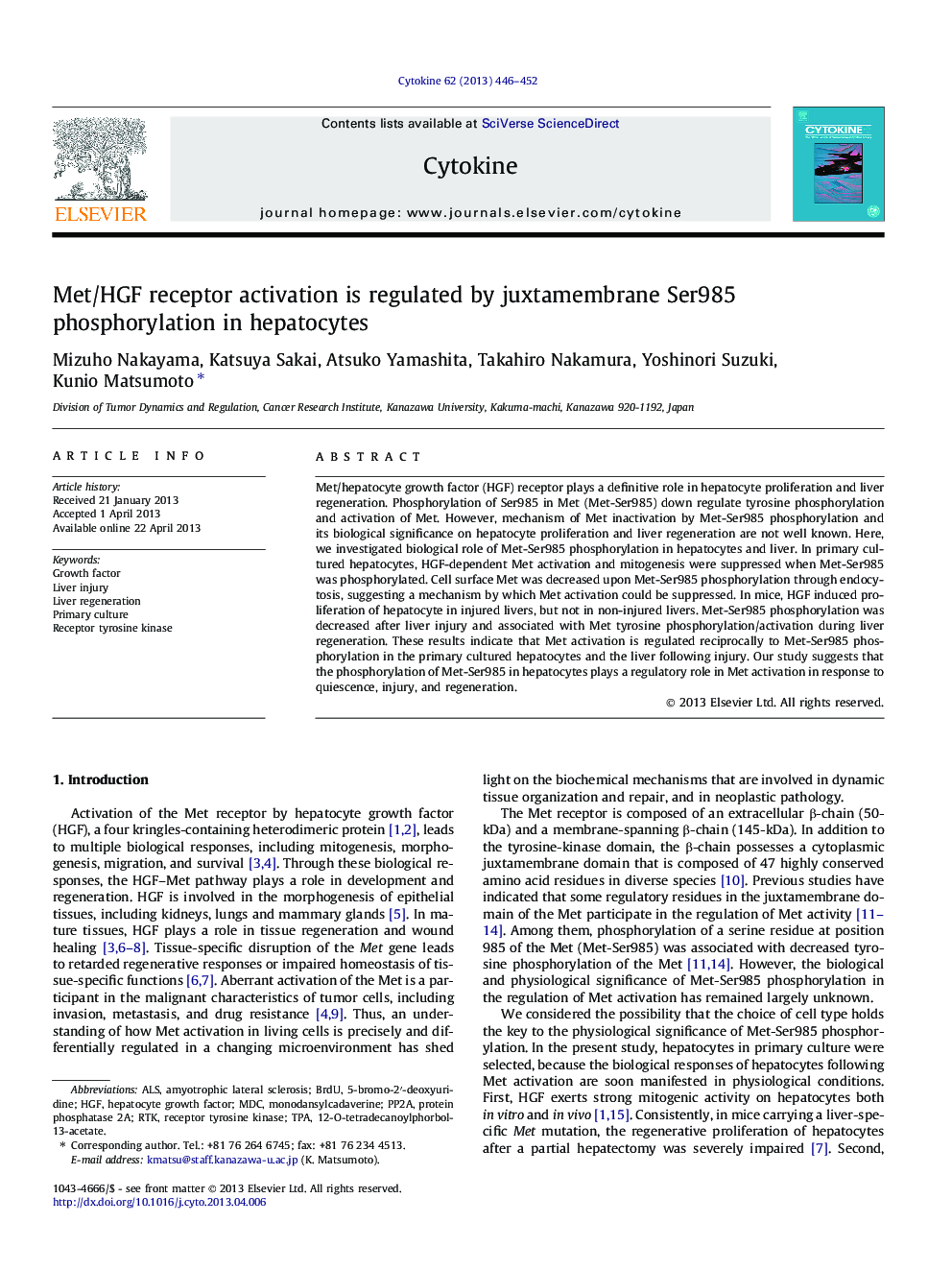| Article ID | Journal | Published Year | Pages | File Type |
|---|---|---|---|---|
| 2794275 | Cytokine | 2013 | 7 Pages |
•Reciprocal phosphorylation of Met-Ser985 and Met-tyrosine during liver injury.•Met-Ser985 phosphorylation inhibits proliferation of primary hepatocytes by HGF.•Met-Ser985 phosphorylation decreases cell surface Met through endocytosis.
Met/hepatocyte growth factor (HGF) receptor plays a definitive role in hepatocyte proliferation and liver regeneration. Phosphorylation of Ser985 in Met (Met-Ser985) down regulate tyrosine phosphorylation and activation of Met. However, mechanism of Met inactivation by Met-Ser985 phosphorylation and its biological significance on hepatocyte proliferation and liver regeneration are not well known. Here, we investigated biological role of Met-Ser985 phosphorylation in hepatocytes and liver. In primary cultured hepatocytes, HGF-dependent Met activation and mitogenesis were suppressed when Met-Ser985 was phosphorylated. Cell surface Met was decreased upon Met-Ser985 phosphorylation through endocytosis, suggesting a mechanism by which Met activation could be suppressed. In mice, HGF induced proliferation of hepatocyte in injured livers, but not in non-injured livers. Met-Ser985 phosphorylation was decreased after liver injury and associated with Met tyrosine phosphorylation/activation during liver regeneration. These results indicate that Met activation is regulated reciprocally to Met-Ser985 phosphorylation in the primary cultured hepatocytes and the liver following injury. Our study suggests that the phosphorylation of Met-Ser985 in hepatocytes plays a regulatory role in Met activation in response to quiescence, injury, and regeneration.
